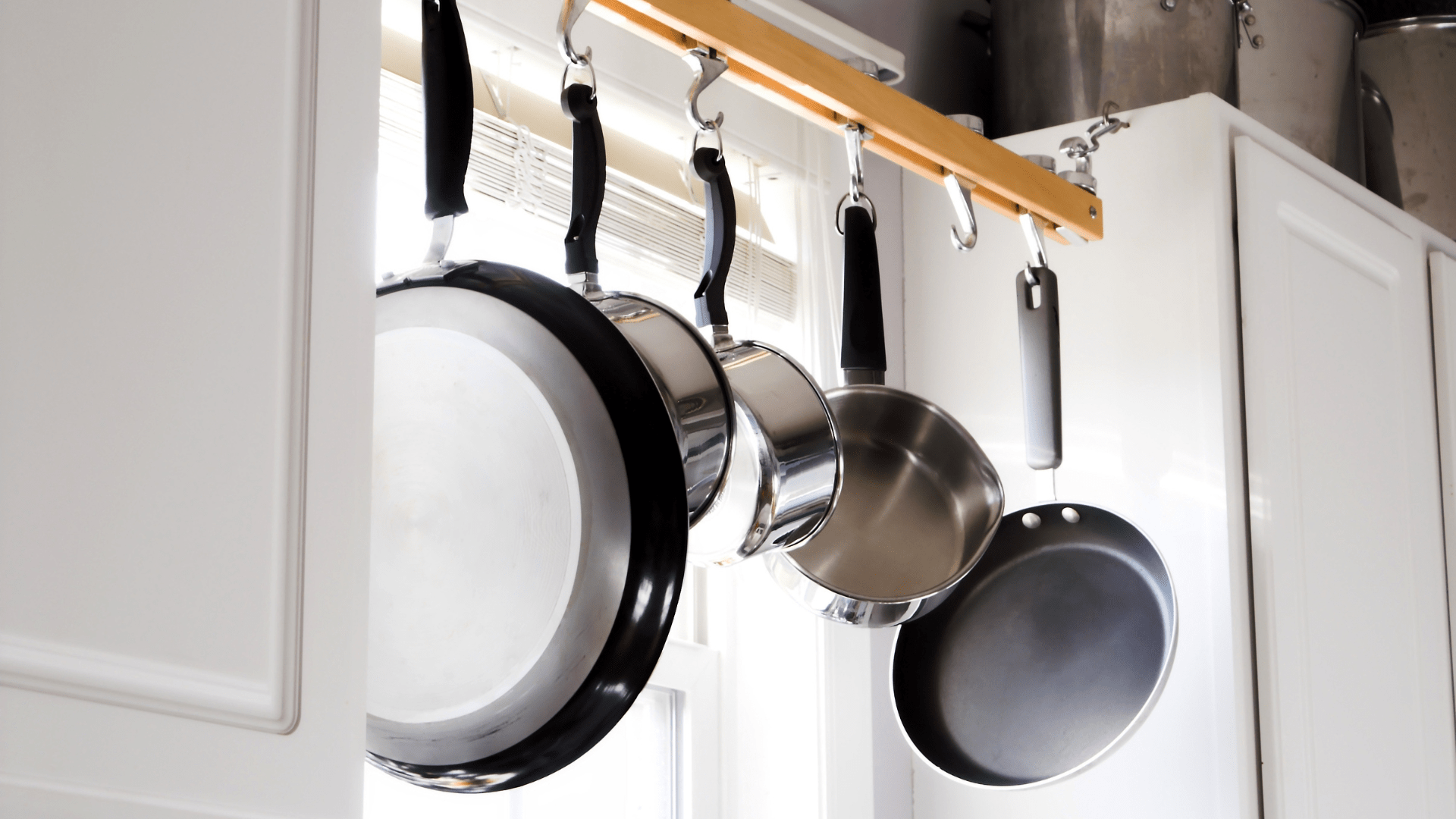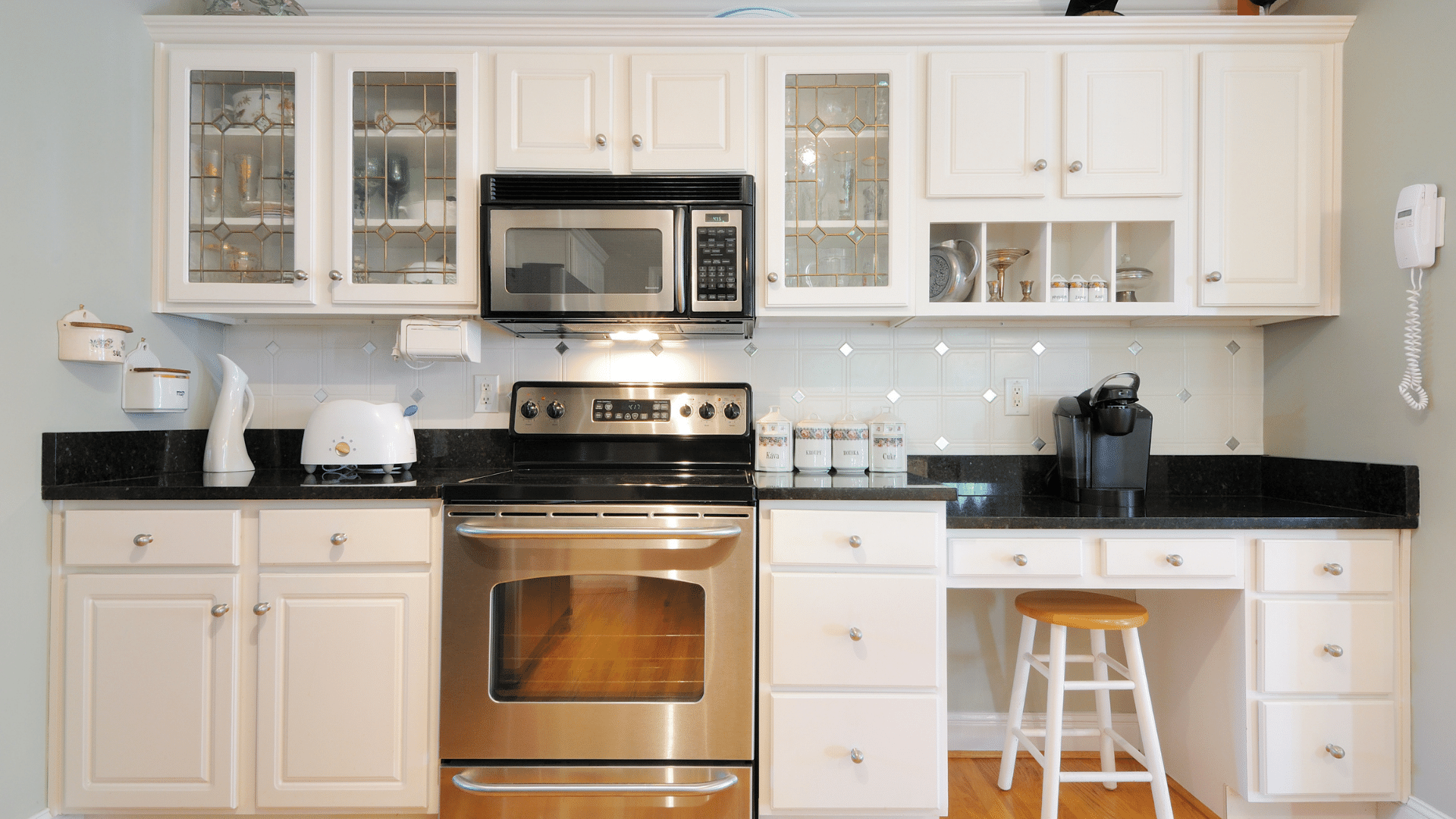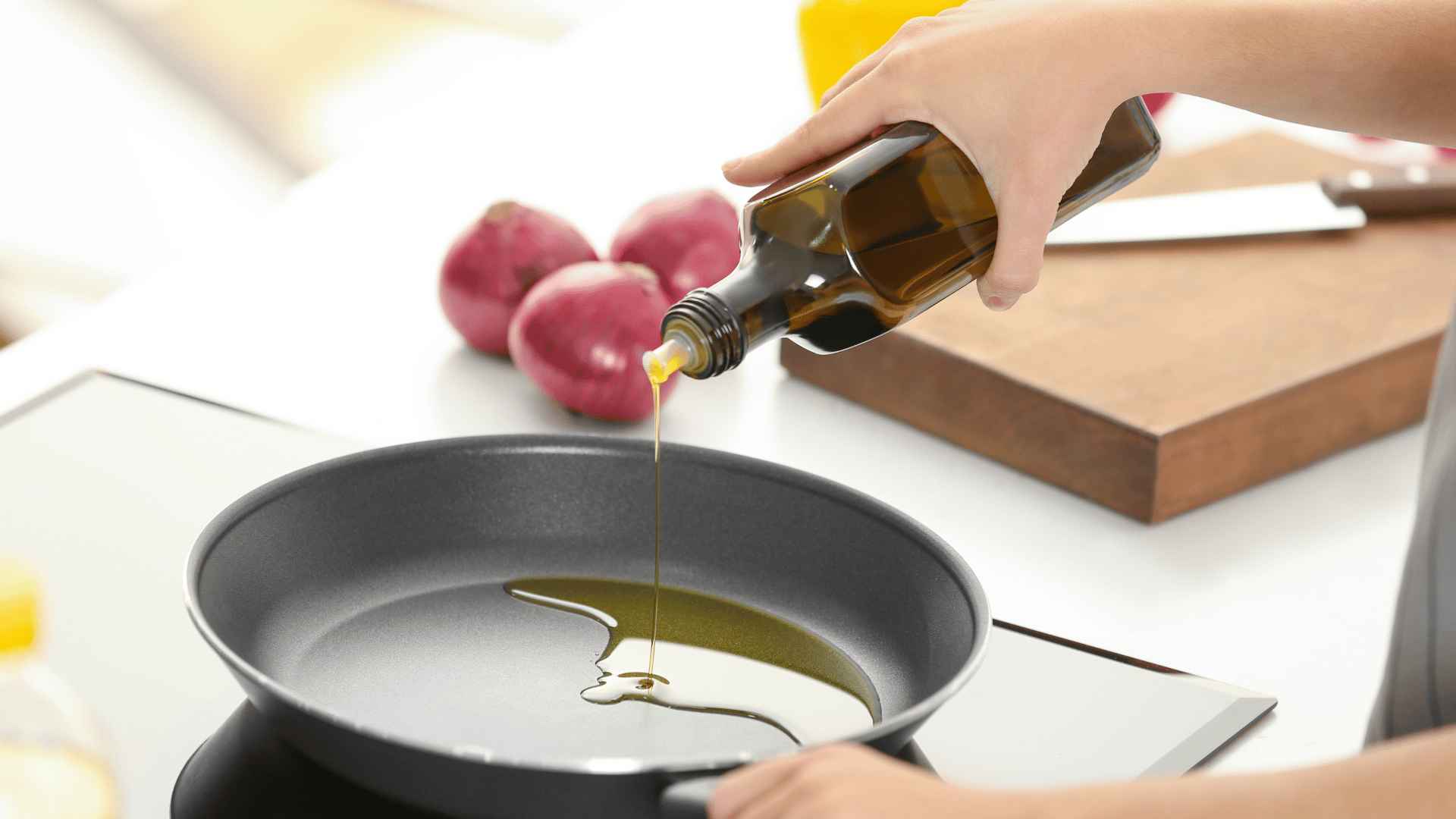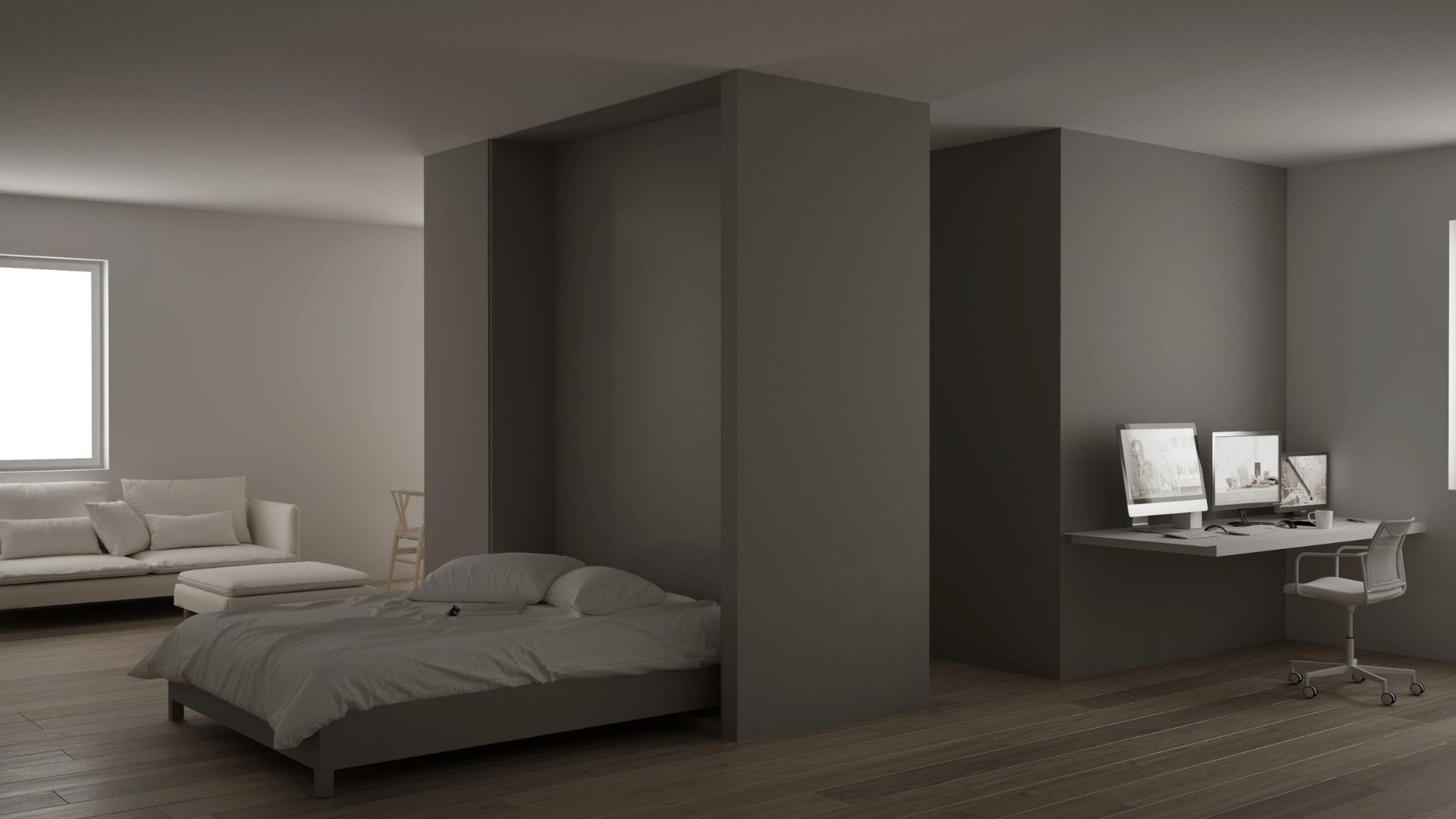If walking around your kitchen feels like a scavenger hunt, it is time to get organized. In a cluttered, messy kitchen, it can be quite stressful and challenging to find the motivation to cook. The finest organizational system for your needs and space can take some time (and patience), but once you've done it, you'll discover that utilizing your kitchen is lot more enjoyable. Of all, most of us use our kitchens for a lot more than just cooking, and every layout and family structure is different. However, there are a few tried-and-true principles that apply in any situation.
Gathering your thoughts will make the operation flow more smoothly even if you don't have time to refurbish the entire kitchen at once. Think of essential part of the process in terms of zones, including the upkeep and cleaning supplies for the kitchen, food, storage space (the pantry and refrigerator), cooking and meal preparation equipment, serving utensils (dishes, glasses, and cutlery), and anything else is relevant to you. By keeping related items as close as possible to their intended use, you'll save time and steps.
Kitchenware comes in a wide variety of sizes and shapes, making storage feel like a challenging game of Tetris. Pots and pans need to be organized in a way that makes them accessible, especially if you have a tiny kitchen or little cupboard space.
To make cooking easier, your cookware storage should ideally be kept close to the range so that you can quickly and easily grab the pan you need without having to dig through a cluttered cabinet. That implies that minimizing your collection is typically the first step in organizing your pots and pans.
POTS AND PANS
Every kitchen needs pots and pans, but they are notoriously difficult to store. Since most pots and pans are too large to fit in a typical kitchen drawer and because pots aren't typically the nicest, you might not be thrilled about using up valuable counter and cabinet space just on them. It can feel like a riddle trying to have all the pots and pans packed away in a logical way because they come in so many different shapes and sizes and you'll probably want them at least relatively close to the stove. Your kitchen will become more organized and clutter-free with the help of these pot and pan storage solutions.
Making a functional kitchen that functions well every day requires organizing pots and pans. It is hardly a productive use of time for anyone to rummage through cabinets looking for the big frying pan you know is "in there somewhere," and it is certainly not conducive to a calm and happy cooking session. We can vouch for that.
Although it may seem like a big chore, setting up effective kitchen storage and a reliable method for organizing pots and pans now will ultimately save you time and effort.
Here, we've put up a how-to manual with expert advice to help you arrange your pots and pans flawlessly.
1. Assess Your Present Collection and Get Rid of Unnecessary items
Walk around your kitchen for a minute. Consider which components are not working properly. Which cabinets or drawers are jam-packed with clutter? Which products are essential to your daily life but are difficult to get to? What features of the configuration as it is now are giving you the willies?
'Start by taking everything out and arranging it on a surface - that way you can see exactly what you've got and start to work out which storage methods would work best for you,' advises expert organizer Lucy Mansey, who is known as 'the Marie Kondo of Britain' by her famous clientele.
You will need to take everything out so you can see what you've got before creating any sort of pots and pans organization system.
Items you rarely use should be donated or recycled. To save space and avoid taking up room in your regular storage, keep special occasion dishes, pots, and pans hidden away until they are required. Try these pots and pans storage solutions to get started on a more organized kitchen and store them when you're ready to put the rest away.
It's likely that you have too many pots and pans unless you're a cook in the professional sense. The clutter created by having three frying pans when you only use one is not convenient. A thorough decluttering will eliminate extraneous stuff and leave you with only what you usually use.
You may create extra space for the goods you actually use and like when you organize the contents of your kitchen cabinets. If you have items in good shape, think about donating them to a nearby charity or thrift shop or giving them to friends or family members who might need them. This can not only aid you in clearing out the clutter in your home, but also other people in your neighborhood. Ask yourself when you last used the item, if it still functions properly, and if you have a purpose for it now or in the future as you choose which items to keep, donate, or throw.
You may make the kitchen cart of your pots and pans more organized and functional so that it better meets your needs by getting rid of things that are no longer useful to you.
2. Stow Away Occasional Cookware
You'll probably find pots and pans during the streamlining process that you don't use every day but use frequently enough to justify keeping. These could be items you use exclusively for entertaining, or baking dishes such oversized casserole dishes and other baking sheets or trays, for two baking sheets for example.
Think beyond the kitchen for these goods because there's no hard-and-fast rule that says all kitchen storage must be in the cooking area, especially if you're searching for compact kitchen storage ideas or organizing a pantry.
By moving something you don't use every day, you can make storage space available. If you're arranging deep pantry shelves, you might want to think about making room for pots and pans or cookware that aren't used very often.
3. Position Near Cook Zone
It's important to place your pots and pans carefully. Locating them close to the stove and stovetop allows for easy access when cooking, reduces unnecessary walking time, and offers a feeling of continuity to the room overall, whether they are in drawers or cabinets. To make them even simpler to grasp, you could also want to hang some up or place others on shelves. If you've been using or storing pots, large pots and any on work surfaces, relocate them to one of the aforementioned locations as part of arranging your kitchen countertops.
Keep the pots and pans you use the most frequently above the stove so you can reach them easily when you're cooking. Install a straightforward pot rack, ensuring sure it is strong enough to handle the weight of your cookware, on the wall behind the range or on the underside of the higher cabinets. Put pots, pans, and kitchenware where you'll need them by hanging them with hooks.
Consider moving non-cooking kitchen items like crockery, glassware, and cutlery away from your pots and pans as you reevaluate your kitchen layout ideas. This is crucial if you enjoy entertaining people. Two persons can work together in the kitchen without running into each other that manner.
4. Create Aside Space in a Deep Drawers
Since you'll be using them almost daily, it will be much easier to keep all of your pots and pans in one easily accessible location, such as a broad, deep drawer, than it will be to dig around in the back of a cabinet.
Drawers are a great tool for both storing pots and arranging your pots and pans. You may neatly store pot and pan lids all together in the shallower drawer at the top and deeper pots in the bottom of graduated drawer systems.
Kitchen drawer organization for pots and pans can be quite beneficial. Consider installing an inside pan rack to provide vertical drawer space, for simple access cast iron pans and room around each item to prevent rattling when you open and close the drawer. To make the most of the available drawer and rack space, there are both vertical and horizontal ones accessible.
Pots and pans are shielded from scratches and noise by lining the bottom shelf of the drawer. A clever hack is a pegboard shelf liner. It's easy to move the dowels to divide casserole dishes from frying pans, for example. This is a storage solution ideal for maintaining organization.
Pots and pans organization in kitchen cabinets, particularly in corner cabinets, can be notoriously challenging. Although they can be one of the most useful areas to put your pots and pans if you use smart kitchen cabinet ideas, they are particularly tough to access and store stuff in.
When the door is opened, racks glide along and out of the unit, efficiently utilizing all the available cabinet space and relieving the strain of heavy lifting from odd angles while attractively displaying larger items like pots and pans.
5. Set up a Pot Rack in the Ceiling
Look to the ceiling for pots and pans organizing if you have a limited amount of wall space and cabinet storage. If you've run out of storage space elsewhere, hanging pots and professional organizer or racks are a terrific solution and come in a wide range of sizes. Make sure you can reach the hanging rack of pots and pans without using a stepping stool, though. If your ceilings are extremely high, consider lengthening the chain on the fixture or mounting the pot and pan organizer or rack on a beam.
By suspending pots and pans from the ceiling, you may recreate the look of a chef's kitchen. It relieves pressure on your cabinet space to both organize pots and hang pots and pans while effectively organizing them.
There are many hanging solutions that can also serve as decorative elements for the space. Pot racks are a fantastic alternative for high up storage, similar to what you'd find hanging pot rack for in a real restaurant kitchen, while hanging pot racks with rails allow them to be hung from a wall, a cabinet door, or island.
To make it simple to not organize pots and pans to accommodate large people, arrange by size and use. The greatest way to get rid of dust is by frequent use, so if you don't enjoy partying, this organizing suggestion might not be for you.
Pot racks that hang from the ceiling are a fantastic option if you don't have much wall space, but positioning cookware on them might be tricky unless your ceiling is extremely high. Your pots might get splattered with oil or other sizzling food mess if you install hanging racks above cooktops.
6. Wall Mount Rack and Open Shelving
If you have a sizable collection of copper pots, mount several racks on top of each other on a whole wall to exhibit your copper cookware.
Pot rails and hooks that are fastened to the wall extend horizontally into the kitchen. These hanging or pot rack and racks can be positioned on a blank wall or above a counter, sink, or appliance and are commonly supported by triangle-shaped brackets.
Wall-mounted pot racks are less likely to interfere with fixtures like ceiling lighting because they are located outside of the kitchen, where they are more straightforward to install than ceiling racks. With the help of wall-mounted racks, you can put your pots far from the cooktops and dripping oil, eliminating the need to rummage through deep cabinets.
When it comes to speed and accessibility, open kitchen shelving is a fantastic choice for organizing pots and arranging (beautiful) pots and pans. Additionally, when done correctly, it may create a chic center point in your kitchen.
It's important to remember that maintaining anything on display requires continual dedication. You must keep everything orderly. The kitchen looks nice and organized when pots and pans are organized according to size and use.
In addition to open shelving, it is thought that placing attractive pots and pans on the stovetop can add some style to the room.
7. Storage of Pans and Pot Lids
If you're intending to organize a tiny kitchen, you should take into account the fact that storing your pots and pans with the lids on is not the most space-efficient option. It eliminates the possibility of stacking, but they can easily split and wind up rattling around or being misplaced at the back of a cabinet. For a more manageable organizational scheme overall, experts suggest storing them apart.
Keep lids in a cupboard or drawer close to the stove so you can quickly grab the appropriate one when preparing a meal. For the other lid components to stay upright and in place, add a pot lid organizer from inside. Utilizing the area behind the door can also be done with the aid of an over-cabinet pot lid organizer or a lid holder.
Ask a kitchen designer about installing custom pan organizer inserts or inner drawers for pan lid storage. Place them alongside their corresponding one so you can immediately and easily match them.
Use tension rods to keep lids separated if you're keeping pots and pans in deep drawers by stacking them vertically along one side.
How Should Pots and Pans Be Arranged?
Reduce multiples organize pots and pans and give priority to dual-purpose products to streamline what you already have and build a more manageable super practical, everyday assortment of pots and pans. Keep sporadic kitchenware in a cabinet in a separate location.
If you're putting pots and pans on display, group them according to size and use, and maintain organization to prevent a cluttered look using hanging rack.
The easiest method is to arrange them according to size.
Stacking them with the largest pots and pans on the bottom and the next pot smallest pots and pans on top might save a surprising amount of room. To separate your pots and pans, you can also utilize your cabinet doors bigger drawers, organizers or drawer dividers. However, if you cook frequently, make sure they are simple to access as well as to store away after cleaning.
Why is pot and pan organization important to do so?
In the kitchen, pots and pans take up a lot of room. It may be challenging how to organize my pots and pans and locate them if they are not arranged. Additionally, they're nearly impossible to use if you can't find them. The average home has between 30 and 50 pots and pans if you count all the lids, colanders, and stainers, and each one of them needs a place to dwell.
Pots and pans should be organized not just to make cooking simpler but also to maintain a clean look in your kitchen. Pots and pans can be arranged in a variety of ways.
For more information on Vista Residences, email [email protected], follow @VistaResidencesOfficial on Facebook, Twitter, Instagram, and YouTube, or call the Marketing Office at 0999 886 4262 / 0917 582 5167.







